- Home
- Alistair Moffat
To the Island of Tides Page 6
To the Island of Tides Read online
Page 6
When Cuthbert rode past the cross by the road and made his way with his servant downhill to Dryburgh, he may have known the story of Modan, but the fact that he moved on to Old Melrose probably means that the early foundation had not survived the saint’s departure.
But I think that Modan’s spirit still flits around the ruined transept, the presbytery beyond it, the cloister and the tumbled walls of the twelfth-century abbey. It was probably built on that site because he had chosen it, dedicated it to God, made it sacred with prayer, and the stories lingered as the centuries passed. And more than that, I believe that like many Irish monks Modan made a link with the pagan past. He will certainly have worn the Druidic tonsure. Monks influenced by the doctrines of the Church of Rome had their hair cut from the crowns of their heads, leaving a fringe around the temples and at the back. This was done in imitation of Christ’s crown of thorns. By contrast, Irish monks and many in Scotland were tonsured across the crowns of their heads, from ear to ear, giving them very high foreheads. Scholars believe that the pagan priests of the first millennium BC, the Druids encountered by the Roman invaders, wore their hair in the same way, their foreheads probably marked by tattoos.
On their missions of conversion of the sixth and seventh centuries, Christian priests and monks were mindful of the advice of Pope Gregory the Great. In the 590s, he ordained that instead of destroying pagan sites and temples ‘they should be sprinkled with holy water’ and used as places of Christian worship. The pagan festivals of Imbolc, Beltane, Lughnasa and Samhuinn should be celebrated not in veneration of idols but for the sake of ‘good fellowship’. This pragmatic approach recognised that for many conversion was not a blinding light, an epiphany or a moment when the whole world changed, but a process whereby beliefs held over millennia gradually shifted. And it was sensible to worship a Christian god at places that were already sacred. They retained their sense of spirituality and also people knew where they were.
For these reasons, I believe that many sites whose history appears to have started only with the coming of missionaries were in fact sacred long before they arrived and that their original sanctity only withered slowly. Like St Anthony, Modan will have been an ascetic, practising mortification of the flesh in many ways. And in itself, I think that this too was a vital link with the beliefs of those who climbed Eildon Hill North four times a year to light fires and celebrate the turning points of the farming year. Unlike the modern Christian God of love and forgiveness, the pantheon of deities who governed the lives and fates of the peoples of Celtic Britain and Ireland, and also those Angles, Saxons and others who sailed the North Sea in search of land, needed to be propitiated. That is, the malignant, aggressive nature of some of these pagan gods had to be neutralised by acts of sacrifice, and often blood needed to be shed. The discovery of what are known as the bog bodies, prehistoric corpses sufficiently well preserved to show the marks of ritual killing, shows that human sacrifices were sometimes required if the pagan gods were to be persuaded not to send thunder, wind and rain to wreck the harvest, or a pestilence to visit the land. Fear was as powerful as faith.
The notion of human sacrifice was not confined to pagan cultures. The early Christian God of the Old Testament asked Abraham to sacrifice Isaac before relenting, but he could also be vengeful, and for many centuries the awful prospect of the fires and pits of Hell, or eternal torment, was very real indeed for most believers. It seems to me that the ascetic monks and hermits were also practising a version of propitiation, a way of pleasing and appeasing God, committing painful acts not only in pursuit of personal purity, piety and the transcendence of the flesh but also undertaken on behalf of communities. For that latter reason, saints were readily venerated, thanked and seen as figures who floated in a sphere between the mortal and the divine and who could intercede with God on behalf of many people. It is thought that the wide proliferation of early saints (each village in Cornwall seems to have its own) was a gradual substitution for local gods.
Like many of his contemporaries, Modan will have embodied much of this continuity and I think he was drawn to Dryburgh because it was already a holy place for the pre-Christian communities who lived along the banks of the Tweed. And that history has not entirely fled. It can be sensed, buried deep on the site of the twelfth-century abbey, where enough of the fabric survives to allow a good reconstruction of monastic life: the bells ringing the canonical hours at dead of night, the chant of the psalms, readings in the chapter house, the whispering as monks gossiped behind their hands, and all the bustle of a busy community going about the business of worship, management and food production. But under the daily din, the silences as the monks shuffled down the night stair to the church for lauds and other intervals of peace, another river runs, one whose course can only be intuited.
I am certain that Walter Scott knew and felt that Dryburgh was different. Of course with his love of romance, he will have felt at home in the old medieval abbey, its scheming abbots, priors, cellarers and novices gossiping, taking part in medieval politics, celebrating the drama of the Latin mass in the presbytery. But in his life Scott was aware, I think, of a strangeness in his own nature, a sensitivity to another world beyond history. In Ivanhoe and others in his vast canon of historical novels, Scott showed a powerful longing for the past that sometimes glows with roseate nostalgia but also connects with the ethereal, the uncatchable, something fluttering on the edge of his imagination. And few novelists have ever captured a pungent sense of place in the long past so well – but sometimes not completely. There is often something of the unexplained in Scott’s stories. Perhaps that was the deeper reason why he chose to be buried at Dryburgh, not just because it is beautiful but because its roots in the long past reached far down into the earth of the river peninsula and were unknowable. Scott knew that ghosts flitted amongst the ruins.
Next to Scott’s solid granite sarcophagus stands the small, simple headstone of a soldier: Douglas Haig, Field Marshal Earl Haig. He wanted the same memorial that was set up to those hundreds of thousands of soldiers who died under his command in Flanders and he is buried at Dryburgh simply because it is close to Bemersyde. As I stood by these two graves in the north transept, it struck me that there was not an obvious and extreme contrast but a clear connection between the unwilling architect of great slaughter on the Western Front and the man whose stories went a long way to inventing the Scotland that many regiments believed they were fighting to protect.
I spent less time at Dryburgh than I expected, perhaps because I was anxious to catch up with Cuthbert and be on my way. In the wooden hut that serves as a ticket office and small shop, I bought a packet of fudge to keep me going on my journey to Old Melrose. I would need it.
* * *
The road from Dryburgh turns sharply downhill to the flood plain of the Tweed and past some trim new houses built not from bricks or breezeblock but a good deal of cut stone. I passed some beautifully squared blocks of red and yellow sandstone sitting on pallets by the roadside. The starkness of these new builds will weather down well as the sandstone mellows with the years and their gardens grow up. I noted high walls and an electric gate around one house and supposed that rural crime penetrates everywhere, even down this half-hidden old road. I passed a footbridge over the Tweed but ignored it. A mile further north was Monksford and I planned a baptism of sorts, to wade across just as Cuthbert and his servant would have done, leading his horse behind them. After the driest summer for forty years, the river should be low.
At the foot of the road, on a small mound that looked artificial to me, stood another imposition from the eccentric Earl of Buchan. His fascination with Greek mythology drew David Erskine into episodes of laughable daftness. Apparently he once held a soiree where he dressed up as Apollo on Mount Parnassus with nine young ladies dancing around him as his muses. Goodness knows what they made of it. On this mound in front of me, at the beginning of a long, straight stretch known as the Monks’ Road, he had masons build a small, circular, pillare
d structure he called the Temple of the Muses, and in the centre a statue of Apollo was installed. It has mercifully gone now and been replaced by a modern bronze by Siobhan O’Hehir of four naked women facing in four compass directions to represent the seasons. They look well, their poses not frozen but somehow sinuous and liquid. By contrast, I am certain that the original statue of Apollo would have borne a distinct resemblance to the cavorting earl. Littering the landscape in this way, plonking inappropriate objects in it for his own aggrandisement and amusement, is more than irritating. Just because they are relatively old, it should not automatically mean that this ridiculous temple and the monstrous statue of William Wallace should not be demolished. Far better to remember the monks who walked the old road beside these oddities: Modan, Boisil, Cuthbert and other later figures whose stories were of this place, men who searched the big skies above the river for signs of God’s presence and who helped make the land look as it does now.
Beyond the mound, the long straight track of the Monks’ Road headed north. The Pathfinder map showed that it led to Monksford, and my determination to splash across the Tweed in Cuthbert’s wake. Supplying access to a smart wooden hut on the banks of the river, one used by those paying handsomely to fish the pools of the Dryburgh Upper beat, the road was in good repair and I made good time. At the end I could see a much more overgrown track beyond a metal gate. Tree-lined and curving down to the riverbank, it seemed not to be much used.
In my rucksack, I had packed spare socks, pants and a towel. My plan was to stuff my boots, trousers and socks in the pack and towel myself dry after I had crossed the monks’ ford and gained the farther bank. About halfway down the track, I spotted a likely, leggy rowan and, with my penknife, cut a staff from it. As I waded the river and its uneven bed of smoothed stones, I wanted something to steady me and test the depth in front. Shaded and quiet, I noticed that the track had been used recently when I saw the marks of horseshoes in damp places, and as I finished the last of my fudge I wondered how recently someone had ridden here. I was certain I was following Cuthbert on his horse, for the track was old and there appeared to be no other way down to the ford he must have used to reach Old Melrose.
However, puzzlement and disappointment waited once more. Instead of leading to the riverbank, the track simply petered out amongst some broadleaf woodland. Beyond it the banks of the Tweed were overgrown with bushes, nettles and the wide, rhubarb-like leaves of hogweed. I thought I could make out the shallows of the beginning of the ford but no path led to it. And off to my left I could see where the rider had gone. There was another track leading along the river, but it went back the way I had come. It was probably used by fishermen.
Only a little daunted, and of course rationalising that the path must have disappeared long ago since no one had been daft enough to use the ford for at least a couple of centuries, I used my rowan pole to thrash aside the hogweed and also warn me of sudden, unseen, ankle-twisting ditches in the overgrown bank. Of which there were several.
On what seemed like an area of level ground (but not free of nettles), I checked to see that no one was around to watch the crazy person strip to his pants and shirt, then stuffed everything into my pack. When I splashed at last into the river, a family of ducks erupted a little way upstream and the sun came out to glint brilliantly off the water. It was cold but not icy, and I could see where large flat stones had been laid near the bank, clear remains of the old ford. Some were the same colour of red sandstone that had built the Temple of the Muses.
I had reckoned the Tweed was about sixty or more yards wide at Monksford, but after I had carefully gone about twenty-five yards and the water was up to my knees, I found it difficult to see the bottom and judge what was in front of me. The channel by the far bank was in shadow and I had no idea how deep it might be. The surface was flowing smoothly, like a large volume of water, no stone or shallows broke it and the river seemed to be moving much more slowly. The small, wing-like shapes of sycamore seeds were eddying, not flowing directly downstream. Prodding with the rowan pole, I suddenly felt it go down much further and nearly lost my balance. My heavier pack didn’t help and I rocked a little. I reckoned the pole touched bottom at about three feet, waist height. So, no. There seemed to be an invisible shelf rather than a gradual incline. So, not that way.
I turned upstream, thinking I might have lost the direction of the ford. Even though the maps all showed it running the shortest distance, directly from bank to opposite bank, perhaps it crossed on the diagonal? No. Not that way either. The far channel seemed deep there too. My baptism into the world of Cuthbert was baulked by a real obstacle.
After more splashing around, almost capsizing again after slipping on some big rounded stones, I decided to go back, to give up, very reluctantly. Without really articulating it beforehand (all I wanted to do was follow Cuthbert as closely as possible), I suppose I saw the wading of the river as a form of informal baptism into his world. But like bridges, fords need to be maintained. The spates of centuries of winters had probably shifted what shallow footing there had been, as the great river reclaimed its natural course. In winter, crossing must have been impossible, as rain and snow swelled the current. Boats would have been the only option. For me there was nothing for it but to be sensible, wade back to the bank to dry off, put my jeans, socks and boots back on, and retrace my steps back to the Temple of the Muses and the footbridge below it.
I had barely begun this journey with Cuthbert but had already seen several reverses and false starts. But in one sense at least I felt I had been close to him. On the road from Brotherstone, I had met no one. On a sunny July morning I had enjoyed a few hours of real peace as I moved through the summer landscape, something I would come to think of as the peace of Cuthbert.
Recently refurbished, the footbridge looked splendid. The views up and downstream revealed broad areas of white, dried-out river boulders and stones below the overgrown banks, but even though the water was low the channel under the bridge seemed deep.
After I had crossed, I came upon a small car park. Signs told me this was a section of St Cuthbert’s Way. Beginning at Melrose Abbey, then climbing the saddle between Eildon Hill North and Eildon Mid Hill, descending to Newtown St Boswells before going on to the village of Bowden, it is not a way Cuthbert would ever have come. But it does pass some beautiful views and, having climbed the long steps to the bank above the river, I came across a steady stream of walkers who were enjoying it, stopping often to take photographs on their phones. One bench had been set up to look north, and of course Eildon Hill North dominated the landscape.
After a long climb up a winding wooden stair, the path snaked through dense woodland above the river and footbridges had been built to cross the deeper wooded deans. After about half a mile, I saw that a recent gale labelled Storm Hector (why has this childish American habit of anthropomorphising destructive weather been adopted?) had blown down a big ash tree and it had landed squarely on a bench, pulverising it. There seemed to be a message there. The path occasionally forked and I found myself following it away from the river. Around a corner, I was suddenly assailed by the roar of traffic above me, a bridge carrying the trucks and cars of the busy A68. This riverside woodland suddenly felt like an underworld, parts of a palimpsest, layers below the thunder of the twenty-first century. A helicopter flew low, unseen, and it seemed to make the trees vibrate. The peace of Cuthbert was shattered and once more I decided to retrace my steps to look for a path by the riverbank.
When at last I emerged from the green shade of the woodland, I found I had been going not so much in circles but back and forth, so that I had only walked half a mile in half an hour, poor progress. The path by the Tweed had almost been overwhelmed by the broad leaves of hogweed, and when I eventually reached the bank opposite the ford it was very difficult to get close to the water to see how deep it was. I met a fisherman in chest-high waders who told me I had been wise to turn back. Not only was there no one about if I had got into difficulties
, I had been standing on the edge of a salmon pool he had only ever thought it safe to fish from the bank or from the place where I had been splashing around in the shallows of the far side.
Some wooden signs and two inexplicable red and blue arrows suggested at least three directions of travel, but I wanted to stay in sight of the Tweed. Someone had taken the trouble to strim the long grass and nettles to open a track and I assumed that it led to Old Melrose. But after a few hundred yards it simply stopped dead on the edge of another deep pool. By this time, I could see the high bank where the river had turned to make its loop around Old Melrose. The site of the old monastery was close and after several reverses and many steps retraced, I did not want to turn back yet again and look for another path. The problem was the alternative – a climb up a high bank to my left. The map showed the woods running out into fields at the top; somewhere up there a track might be found.
There seemed to be plenty of saplings growing out of the slope, most of them as thick as my arm, and for about twenty feet I made good and careful progress. But then I had to swing across the face of the bank for a good handhold on a sapling that would lead me up what looked an easier route. But when I slipped on the damp, peaty earth I cannoned heavily into the little tree, hitting it with my chest. Unfortunately a hard plastic buckle on my rucksack was between me and the tree and I heard the unmistakable click of a rib snapping.
I knew that sound and what it felt like. Some years ago, when I had some money, I bought myself a splendid dapple-grey gelding. Standing almost seventeen hands, Sooty (daft name, I know, but he had black legs) could easily carry me and we enjoyed some memorable hacks in the countryside around our farm, and with a professional rider aboard he won the Novice Working Hunter class at the Ettrick and Yarrow Show. But one morning, in the arena next to the stables, I rode him without stirrups. Absolutely daft for such a poor rider. Instinctively I held on with my legs, squeezing him around the girth and, well schooled as he was, that sent him off into an abrupt canter and me flying out the side door. I fell hard and broke several ribs on my right-hand side. Exactly where the plastic buckle, me and the tree had collided. It hurt, but not so badly that I couldn’t make it to the top of the bank, and from there to the plateau of the river peninsula of Old Melrose. I wondered if repeated and inadvertent mortification of the flesh ranked alongside the self-inflicted torment practised by the monks who had crossed the ford and trodden the path to the diseart thirteen or more centuries before I made my undignified entrance.

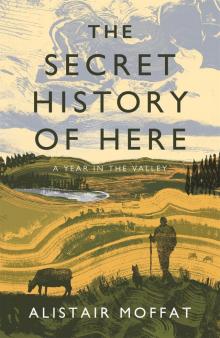 The Secret History of Here
The Secret History of Here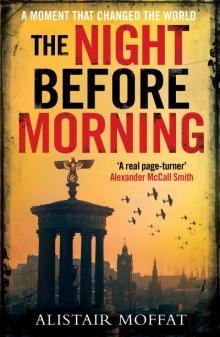 The Night Before Morning
The Night Before Morning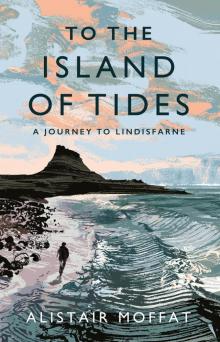 To the Island of Tides
To the Island of Tides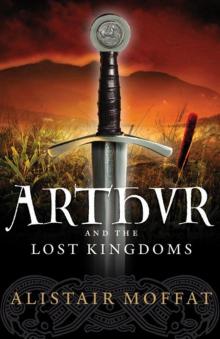 Arthur and the Lost Kingdoms
Arthur and the Lost Kingdoms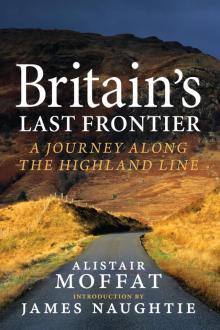 Britain’s Last Frontier
Britain’s Last Frontier The Faded Map: The Lost Kingdoms of Scotland
The Faded Map: The Lost Kingdoms of Scotland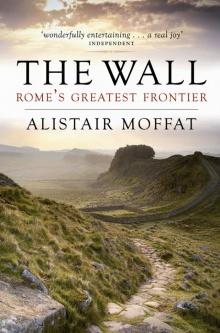 The Wall
The Wall